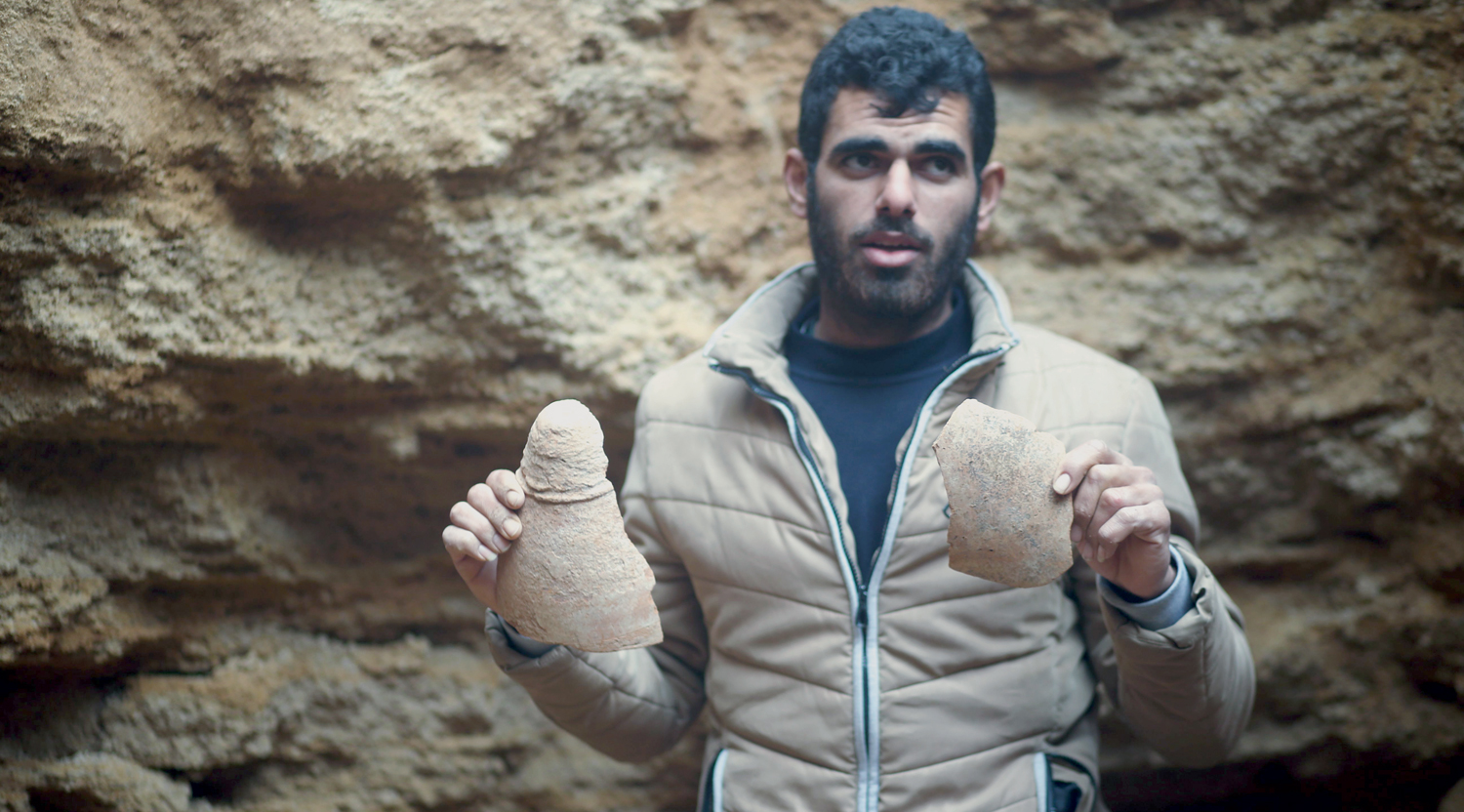

BEIT HAUN: When Abdul Karim al Kafarnah went to check the rainwater gushing down a hole in his garden he was in for quite a shock — hidden steps led him down to an ancient grave complex.
The 24-year-old lives in the Beit Hanoun district of the Gaza Strip by the Israeli border which suffered intensive bombardment during the 2014 conflict between the Israeli army and Palestinians.
The family home was destroyed and the surrounding plots heavily churned up, leaving extensive craters in the ground. The flash-flooding earlier last week led him to one particular spot, where, on removing a large stone, he found a staircase leading 13 feet down into an ancient tomb.
“I discovered the place where the water was falling in,” he said.
“I lifted the stone and a stale smell came out.”
As he descended, he found a total of nine graves, with piles of bones in some of them — seemingly containing more than one body each. He also found votive lamps and other pottery.
Gaza-based archaeologist Ayman Hassouna said the finds suggested the grave dated back to the Roman era, 2,000 years ago.
“The burial and excavation methods in this tomb date it back to the Roman period, but it may have continued in use into the early Byzantine period (5th to 7th centuries AD),” he said.
Professor Jodi Magness, an archaeologist at the University of North Carolina, said such tombs were relatively common in the Holy Land between 100 BC
and 100 AD, and again between 300 and 500 AD.
“Typically, these were family tombs, or sometimes larger tomb complexes could be divided up among families,” she said.
Gaza was a prosperous port in the Roman and early
Byzantine periods and boasted many ancient monuments that have since been lost. — AFP
Oman Observer is now on the WhatsApp channel. Click here



